Fred Mulhaupt
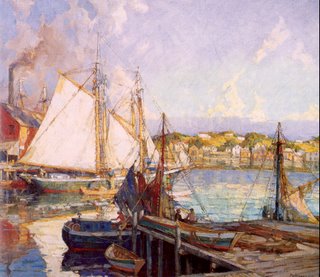 Born in 1871, died 1938, Fred Mulhaupt was one of the founding members of the P&C. He is mentioned in the Inland Printer article of June 1896 as a "display advertiser," and he is listed as an active member in the club masthead of 1906 as an active member.
Born in 1871, died 1938, Fred Mulhaupt was one of the founding members of the P&C. He is mentioned in the Inland Printer article of June 1896 as a "display advertiser," and he is listed as an active member in the club masthead of 1906 as an active member.From what I can find on the internet, Mulhaupt studied in Kansas City, the Art Institute of Chicago, and in Paris. After leaving Chicago in about 1904, Mulhaupt "took up residence at New York's Salmagundi Club. Mulhaupt lived in New York during the winter and began to visit Gloucester MA in the summer. In 1922 he moved there. His talents blossomed in Gloucester. He became a founding member of North Shore Arts Association and exhibited every year from 1923 to 1938. Mulhaupt's signature works are those that depict the working harbor of Gloucester."
Emile Gruppe once said of Mulhaupt: "There were painters in Gloucester in the old days who were more exact than he was--more 'authentic' in that they got the shape of each boat exactly right. But many of these painters, as you looked at their work, might just as well have been painting a scene in England or Norway. Mulhaupt got the smell of Gloucester on canvas. He captured the mood of the place--and that's worth all the good drawing of a hundred lesser painters." (The North Shore Arts Association of Gloucester published a catalog of Mulhaupt works for a 1999 exhibition there; I'll try to buy one online soon.)



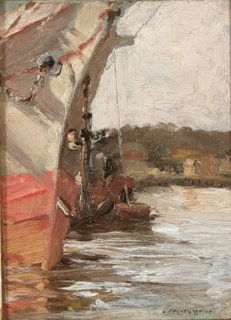
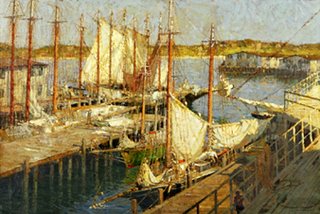



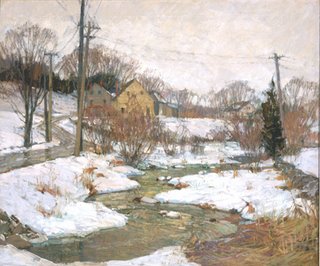


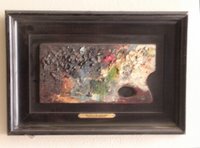

0 Comments:
Post a Comment
<< Home